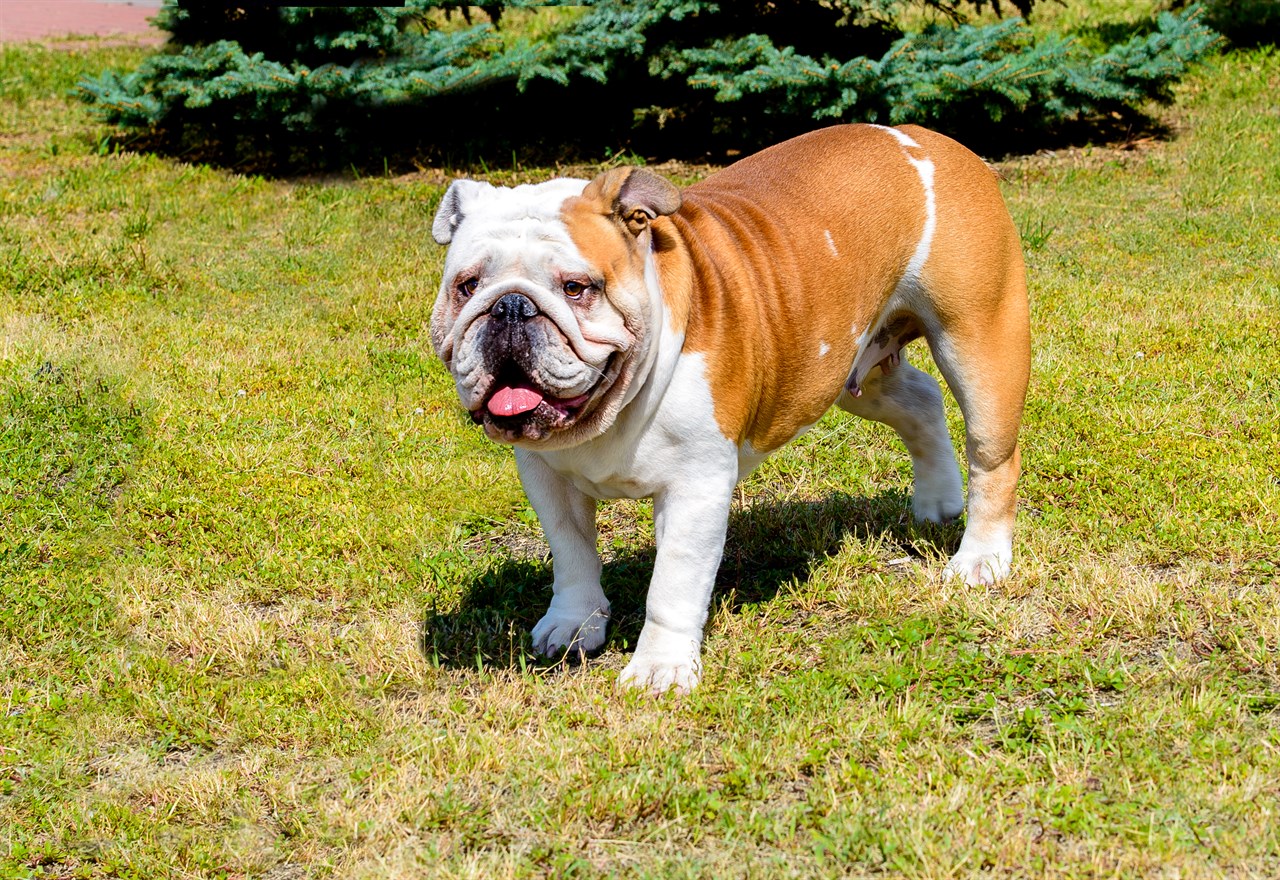British Bulldog Toilet Training: Patience and Consistency

Toilet training, also known as housebreaking or potty training, is a crucial aspect of raising a well-behaved and hygienic British Bulldog. While Bulldogs are known for their affectionate nature and loyalty, successful toilet training requires patience, consistency, and understanding of their unique traits.
Here are some key tips to help you toilet train your British Bulldog effectively
- Start Early: Begin toilet training your Bulldog as soon as you bring them home. Puppies have small bladders and may need to relieve themselves frequently, so early training is essential. Generally, puppies can control their bladder for about one hour for every month of age, so be prepared for frequent outings during the first few months.
- Establish a Routine: Create a consistent daily routine for your Bulldog. Feed them at specific times and take them out to eliminate shortly afterwards. Puppies often need to go after meals, playtime, and waking up from naps. By sticking to a schedule, you'll help your Bulldog anticipate when it's time to go outside.
- Choose a Designated Spot: Designate a specific area in your yard or outside your home where you want your Bulldog to eliminate. Take them to this spot every time you go outside for bathroom breaks. Using the same spot consistently helps them associate it with the act of relieving themselves.
- Use Positive Reinforcement: When your Bulldog eliminates in the designated spot, praise and reward them immediately. Positive reinforcement, such as treats or enthusiastic praise, helps reinforce the behaviour you want. Be consistent with your rewards to let your Bulldog know they've done something right.
- Watch for Signs: Pay close attention to your Bulldog's behaviour. They may exhibit signs such as sniffing, circling, or whining when they need to go. When you notice these signs, take them outside promptly. Anticipating their needs can prevent accidents indoors.
- Supervise and Limit Freedom: During the initial stages of toilet training, keep a close eye on your Bulldog indoors. Use baby gates or a crate to limit their access to other areas of the house. This minimises the chances of them sneaking off to eliminate in an unsanctioned area.
- Be Patient and Avoid Punishment: Remember that accidents will happen, especially during the learning process. Avoid scolding or punishing your Bulldog for accidents, as this can create anxiety and confusion. Instead, focus on reinforcing good behaviour and providing opportunities for success.
- Clean Accidents Thoroughly: If accidents occur indoors, clean them up promptly and thoroughly to remove any lingering odours. Bulldogs have a keen sense of smell, and residual odours can attract them to the same spot again.
- Transition to Longer Intervals: As your Bulldog grows and gains better bladder control, you can gradually extend the time between bathroom breaks. Pay attention to their signals and adjust your routine accordingly.
- Consistency is Key: Consistency is the cornerstone of successful toilet training. Stick to your routine, reward good behaviour, and remain patient throughout the process. Every Bulldog is unique, and some may catch on faster than others, so it's essential to tailor your approach to their individual needs.
Common Challenges and Troubleshooting
- Stubbornness: British Bulldogs can be stubborn, so don't be discouraged if progress is slow. Continue with your positive reinforcement and consistency, and they will eventually catch on.
- Nighttime Training: For nighttime training, gradually extend the time between bathroom breaks and provide access to water earlier in the evening. Be prepared for nighttime outings until your Bulldog can hold it through the night.
- Age and Development: Remember that Bulldog puppies may not have full bladder control until they are several months old. Be patient and understanding as they grow and develop.
- Professional Help: If you encounter significant difficulties or your Bulldog doesn't seem to respond to your training efforts, consider seeking advice from a professional dog trainer or behaviourist. They can provide personalised guidance and solutions for your specific situation.
In summary, toilet training a British Bulldog requires time, patience, and consistency. By establishing a routine, using positive reinforcement, and understanding your Bulldog's needs, you can help them become a well-trained and well-behaved member of your family. Remember that every dog is unique, and progress may vary, so stay persistent and positive throughout the process.
British Bulldog puppies for sale
- Find British Bulldog puppies for sale in ACT
- Find British Bulldog puppies for sale in NSW
- Find British Bulldog puppies for sale in NT
- Find British Bulldog puppies for sale in QLD
- Find British Bulldog puppies for sale in SA
- Find British Bulldog puppies for sale in TAS
- Find British Bulldog puppies for sale in VIC
- Find British Bulldog puppies for sale in WA